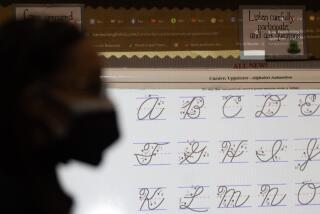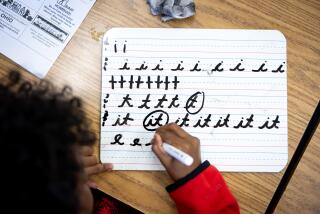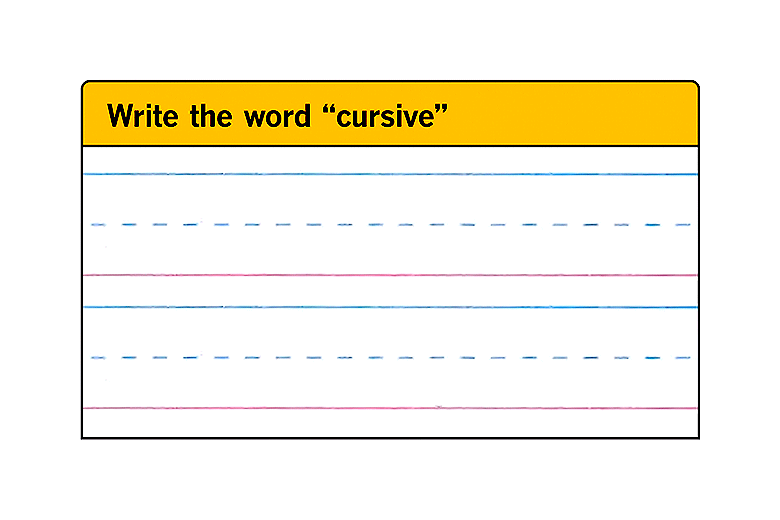In the Life of a Handwriting Sleuth, No Ts Are Ever Left Uncrossed
- Share via
Iif it’s not too flip to have favorite crimes, I’d say that my favorites are the brain-over-brawn misdeeds--intelligently conceived, coolly executed, the triumph of pen point over gunpoint.
The best of them are to be found in books, crimes worthy of Sherlock Holmes and his fictional progeny, solved by watermarks and cigar ash and dogs that don’t bark. But there are a few impressive real-life capers, like the Donation of Constantine, the 8th century fake that gave the papacy supremacy over much of Italy, and the modern-day forgeries of Mark Hofmann, who hornswoggled the Mormon Church and the brightest document dealers in the nation.
For a professional like Karen Chiarodit, senior examiner of questioned documents at the LAPD, real life, real work, doesn’t very often hold that matching of wits. “As far as good forgers go,” she says with almost as much regret as humor, “you just don’t see it. People don’t take pride in their work.”
*
Karen Chiarodit is a purist. she is a cop’s daughter who has devoted nearly 20 years of her life to handwriting analysis, as practiced under the reasonable-doubt rigors of criminal law. She looks upon circus-midway “graphology” as entertainment, harmless except when it casts her work in a frivolous light.
It’s hard to persuade a public more impressed by astrology than astronomy. She has heard of a graphologist in the Bay Area who claims to be able to look at your handwriting and know whether you’ll get cancer 10 years down the road, of correspondence-school grads who say they can discern saints from serial killers by a few pen strokes. Even in her own work, Chiarodit says, they don’t always get it--like the law enforcement agent who asked her of a suspect’s writing, “Can you tell if he was upset?” Her answer is no.
In handwriting analysis, “the theory doesn’t change. It is today what it was 80 years ago, and that is that no two people write exactly alike.” It’s unaltered by mood or marital discord. What she can discern is whether two documents were written by the same hand, perhaps whether the writer is left- or right-handed, and maybe whether he was educated abroad. “Writing can have an accent,” she has found.
But, oh, what she can do with those skills. Her testimony about jailhouse-confession letters helped convict Mikhail Markhasev of the murder of Ennis Cosby. She also was involved in the case of LAPD’s least-wanted, Rafael Perez, the cop who stole cocaine after forging another Officer Perez’s name on property-room records. The good Perez had a handwriting quirk that Chiarodit had never seen before, and one which allowed her to show the forgery: He made his numeral 2s from the bottom up.
The clues she seeks are in “obliterated writings,” insertions and excisions and (the one that makes me think of Hercule Poirot) indentations, finding whether the page underneath shows the same impression matching the writing in question, like a colorless carbon from the page above. And just as experts learned to find the singular flaws between one typewriter and the next, Chiarodit’s staff can find differences among fax machines and computer printers.
Instead of the absolutes of fingerprint analysis, where she spent 18 months before going over to Questioned Documents as its youngest member, handwriting analysis has a nine-point scale of accuracy between “elimination” (not a chance) and “identification” (undoubtedly the same).
Technical as it sounds, Chiarodit has an advantage over most expert witnesses: Unlike DNA or blood types, forgery is often clear to the naked eye. “When I testify, I like to see them all nodding their heads.”
As Chiarodit takes handwriting samples from the accused, they may disguise their writing, or spit on her--or confess. Once, in a meeting with a jailed man accused of killing a cop, she read aloud from a rap song that had been written by the killer, whose lyrics only the killer would know. The suspect corrected her: “Oh no, you left out a line. I ought to know--I wrote it.”
*
After 20 years, it takes a lot to surprise Chiarodit. Six or seven times out of 10 the job is a simple forgery or a fraudulent credit card or a bad check only good enough to pass muster with a harried bank teller.
Penmanship is no longer high on most schools’ priority lists; most people don’t even know what “cursive” means anymore. Where Chiarodit’s old LAPD mentors sometimes could tell from a man’s handwriting what city he grew up in, nowadays there is a sloppiness to Americans’ script, or a preciousness, what Chiarodit calls the annoying “pretty, girly, bubble-gum” handwriting laden with hearts and flourishes.
At this Chiarodit makes a face. She learned her penmanship in Catholic school, where the nuns kept watch as she balanced a quarter on the back of her hand as she wrote. And suddenly, as I took notes, I was as self-conscious about my Greek “Es” and my idiosyncratic “Ms” as I had been in fourth grade, when Mrs. Longwell put fountain pens in our hands and the Parker copperplate examples in front of our eyes.
More to Read
Sign up for our Book Club newsletter
Get the latest news, events and more from the Los Angeles Times Book Club, and help us get L.A. reading and talking.
You may occasionally receive promotional content from the Los Angeles Times.







